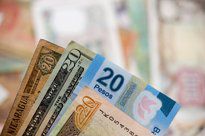
In the high-leverage game of retail forex day trading, certain practices can result in a complete loss of capital. The foreign exchange or FX market is a global marketplace for exchanging national currencies.
Forex is traded primarily via spot market, forward contract, and futures contract. Five common mistakes that day traders make to ramp up returns may ultimately have the opposite effect.
Key Takeaways
- The foreign exchange or FX market is a global marketplace for exchanging national currencies.
- Currencies are traded electronically over the counter (OTC).
- Averaging down in forex markets often means a losing position is held.
- A news announcement, like the Federal Reserve raising or lowering interest rates, will impact markets.
1. Averaging Down
Traders often practice averaging down, though it is rarely intended. Averaging down in forex markets often means a losing position is being held, potentially sacrificing money and time. Additionally, a larger return is needed on the remaining capital to retrieve any lost capital from the initial losing trade.
If a trader loses 50% of their capital, it will take a 100% return to bring them back to the original capital level. Losing money on single trades or single days of trading can cripple capital growth for long periods.
Averaging down will inevitably lead to a loss or margin call, as a trend can sustain itself longer than a trader can stay liquid, especially if more capital is added as the position assumes losses. Day traders are sensitive due to the short timeframe for trades, which means opportunities are short-lived, and quick exits are needed for bad trades.
2. Pre-Positioning Forex Trades
Traders know the news events that will move the market, yet the direction is not known in advance. Taking a position before a news announcement can seriously jeopardize a trader’s chances of success.
A news announcement, like the Federal Reserve raising or lowering interest rates, will impact markets. Other factors, such as additional statements, statistics, or forward-looking indicators, can make market movements illogical.
As volatility surges and orders hit the market, stops are triggered on both sides. This often results in whipsaw action before a trend emerges. Taking a position before a news announcement can seriously jeopardize a trader’s chances of success.
3. Forex Trades After News
A news headline can hit the markets and cause aggressive movements. If completed in an untested way and without a solid trading plan, it can be just as devastating as trading before the news comes out.
Day traders should wait for volatility to subside and for a definitive trend to develop after news announcements. By doing so, there are fewer liquidity concerns, risk can be managed more effectively, and a more stable price direction is visible.
OTC
The foreign exchange market is where currencies are traded but lacks a central marketplace. Instead, currency trading is conducted electronically over the counter (OTC).
4. Risking More Than 1% of Capital
Excessive risk does not equal excessive returns. Traders who risk large amounts of capital on single trades may eventually lose it in the long run. A common rule is that traders should risk no more than 1% of capital on any single transaction to ensure that no single trade or a single day of trading significantly impacts the account.
Day trading also deserves extra attention, and a daily risk maximum should be implemented. This daily risk maximum can be 1% of the capital or equivalent to the average daily profit over 30 days. For example, a trader with a $50,000 account could lose a maximum of $500 per day under these risk parameters.
5. Unrealistic Expectations
Personal trading expectations are often imposed on the market. However, the market doesn’t react to individual desires, and traders must accept that the market can be choppy, volatile, and trends in short-, medium- and long-term cycles.
The best way to avoid unrealistic expectations is for traders to formulate a trading plan. If it yields steady results, they don’t change it. With forex leverage, even a small gain can become large. As capital grows over time, a position size can be increased to bring in higher returns, or new strategies can be implemented and tested.
A trader must also accept what the market provides at its various intervals intraday. For example, markets are typically more volatile at the start of the trading day, which means specific strategies used during the market opening may not work later in the day. Toward the close, there may be a pickup in action, and yet another strategy can be used.
How Do Currencies Trade on the Forex Market?
Currencies trade against each other as exchange rate pairs, such as EUR/USD, a currency pair for trading the euro against the U.S. dollar.
What Types of Investment Vehicles Trade Forex?
Forex is traded primarily as spot, forward, and futures markets. The spot market is the largest because it is the “underlying” asset on which forwards and futures markets are based. The forwards and futures markets are more popular with financial firms that need to hedge their foreign exchange risks.
What Is an Exit Strategy?
An exit strategy is a contingency plan executed by an investor to liquidate a position in a financial asset. When averaging down, traders must not add to positions but sell losers quickly with a pre-planned exit strategy.
The Bottom Line
The foreign exchange or FX market is a global marketplace for exchanging national currencies, and day traders can face setbacks. Averaging down, reactive trading to market news and volatility, having exceedingly high expectations, and risking too much capital are common mistakes.


